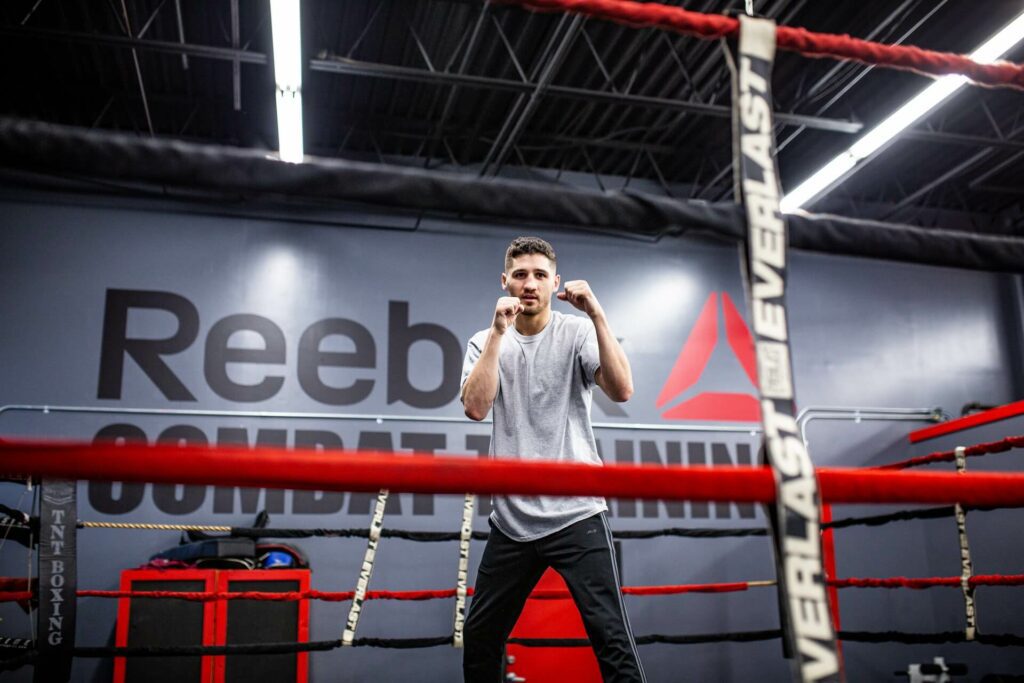Introduction
Boxing is a mind game, it always has been, Mike Tyson once said: “Everybody thinks this is a tough man’s sport. This is not a tough man’s sport. This is a thinking man’s sport. A tough man is gonna get hurt real bad in this sport.”
In boxing, you have to use your head to think a couple of steps forward. You have to strategize and experience scenarios in the ring to develop what is called boxing IQ. Feints and fakes are crucially needed for a boxer in order to be better, develop boxing IQ, set up upcoming shots and combinations, and occupy the opponent’s attention.
What are feints and fakes?
Feinting and faking come together. In boxing, it is an act in that a boxer uses his hands and sometimes his body to make a move like a jab, cross, hook, etc.. but instead, he does not do it. You can also see it as your body language shows that you want to make a move, but eventually you do not do it.
This makes the opponent think and occupy his attention, so now you can do it again, but the third time you will make the move you intended. Your opponent will be forced to consider your fakes and think this might frighten him from making moves and consider his next moves more carefully.
Common feints:
Jab feint: many professional and amateur boxers alike feint the jab. Feinting the jab is considered a common feint and is intended to set up a proper combination or shot in the future of the fight.
Cross feint: occupying your opponent’s mind with the backhand movement and showing intention with the body language and the backhand that it is about to be thrown but instead holding it. This creates confusion about when it is really about to be thrown and gives an advantage and a better chance of landing it when really thrown.
Hook to the body feint: When in close-range fighting, after a few encounters, feint the hook to the body and instead transform it into an uppercut. We can see it sometimes in Canelo feinting style. This gives a good chance of landing a powerful uppercut since this is an unexpected and surprising move.

Study case of a professional fake
A beautiful fake by Floyd “Money” Mayweather, by analyzing his fighting style. In some of his fights, he fakes a jab to his opponent’s body at least three or more times. He is landing them on the opponent’s body and occupying the opponent’s attention on this move. When he decides to execute his game plan, he quickly changes the jab to the body with a cross to the head. The opponent is completely surprised and caught off guard, the cross landing almost clean on the chin.
Dealing with fakes and feints
This depends on the fighter’s style and how the fight progresses but here are some general tips on how to deal with them. Feints and fakes can be dealt with in several ways, including taking a distance from your opponent to break his rhythm, feint, and fake back, or making your opponent pay as soon as you catch him trying to feint.
Taking the distance
Taking the distance means that a boxer takes a step back from the fighting range, where the opponent cannot reach him with any punch or even with a punch combined with a footstep. This gives the boxer a moment to think about how to approach the opponent, break the opponent’s rhythm, and a chance to reflect on the opponent’s next moves. It is advised to do it often when trying to “crack” the opponent’s style and feints.
Watch for a pattern
Observe how your opponent moves and what punches he usually tries to fake, or feint try to count and see which punches he fakes or feints the most. This might give you a clue as to what he will fake next, bringing you a step forward in reading the opponent’s moves.
Making the opponent pay
When catching the rhythm and pattern when the opponent is feinting, immediately catch him with a jab, cross, or uppercut. It will make him think that you understood when he is about to feint and when not, making him rethink what he will do next.
Stay calm and focused
Try to stay calm, don’t over react to the opponent move but don’t be naïve to them. This usually comes with experience, keep your composure and be patient. This will help you avoid making mistakes and do exactly what your opponent wants you to do.
Do not get distracted by your opponent’s eyes. Instead, keep your eyes on the upper body, shoulders, and neck. It will give you a better grasp of what move he is about to make and give you better opportunities to duck and dodge incoming punches, as you will not get distracted by fakes he can make with his eyes and looks.
Summary
It is important to remember that boxing is a thinking sport. First, there is not a single elite fighter that does not fake or feints. This is a fundamental and crucial part of a boxer’s skillset. Learning and evolving your fakes and feints will take you a step forward as a boxer.




